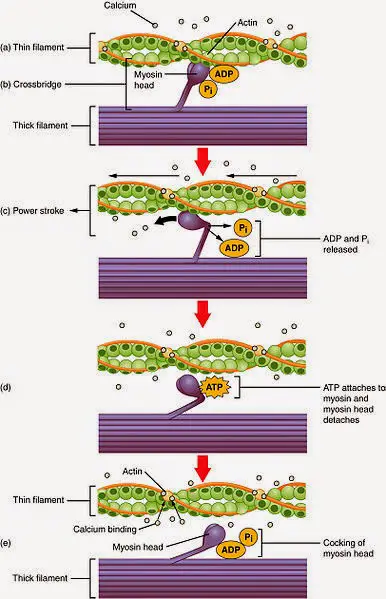Rigor in Latin means “stiffness,” and mortis means “of death.” But why does the body of a person or an animal get stiff after death, and what causes it? Interestingly, there is a specific physiological process playing out, even when all life is gone.
Right after death, the body’s muscles don’t just stop working instantly. To understand this, one has to take a look at what is going on with the anatomy and physiology of the body.
Muscles in the body are made up of smaller and smaller distinct parts. They are composed of muscle fibers that are bundled into a fasciculus, and a number of these fasciculi make up a muscle. Taking it down to the micro-level, the muscle fibers are made up of myofibrils, and within these myofibrils are even smaller strands called myofilaments. The myofilaments are made up of two protein filaments called actin and myosin, which sit next to each other. These are the sources of a muscle contraction.
A muscle contraction at this level happens when myosin attaches to actin after calcium is released into the cell space. After a chemical reaction, the myosin “ratchets” or pulls on the actin filament. This is also known as the power stroke. The myosin and actin are attached, and in order to repeat the process, something has to come along to detach the myosin from the actin. This is where an important energy molecule of the body called adenosine triphosphate (ATP) comes in. An ATP molecule attaches to the myosin which causes the link to be broken before the process is repeated again. This tiny molecule is the cause of rigor mortis.
Here’s the complex way a muscle contraction works in a myofilament.

When the body is no longer undergoing aerobic respiration (breathing oxygen), it depletes the source of oxygen and can’t continue to produce ATP. After death, when oxygen is no longer being used to make ATP, the body goes into an anaerobic state (which means without oxygen). Since there is no longer oxygen being supplied, glycolysis begins and continues to make ATP from glycogen, the glucose storage of the body. When these stores become depleted, the ATP supply also becomes depleted.
When this happens, the myosin is no longer able to detach from the actin to release the muscle contraction. This is why rigor mortis is gradual and not instantaneous. When there is no more ATP to detach the filaments from one another, stiffness sets in, and the muscles become fixed in place.
Initial rigor mortis can be anywhere from ten minutes to a few hours. It varies in how quickly the body starts to stiffen based on temperature. In a colder climate, rigor mortis will set in slower. Full rigor mortis usually occurs about twelve to twenty-four hours after death with the smaller muscles of the face being affected first. After several days the body will begin to relax because of tissue decay.
Rigor mortis is also used to estimate the time of death. Based on the stiffness of the body and the temperature, an accurate estimation of the time of death can be determined, making it an important forensic tool. And to think all of it is caused by one tiny energy molecule.


